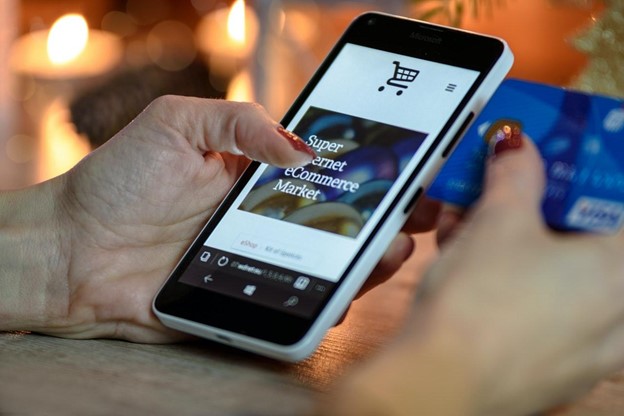E-commerce has become an increasingly important part of the global retail framework as Internet access and adoption continues to grow worldwide. In 2020, more than two billion people around the globe purchased goods and services online, and total global e-commerce transitions topped $4.2 trillion USD. And since the COVID-19 pandemic, e-commerce has continued to accelerate even more, growing more than 14% in the U.S. alone since 2020.
As e-commerce continues to grow, companies continue to look for ways to serve their customers better. Social media can be a great tool for any e-commerce business that’s trying to grow. Social media has come a long way to cater to small businesses and online users. During this evolution, social media users and businesses alike have come to rely on social media for e-commerce. To fully understand how your business can use social media to enhance your e-commerce strategy, let’s review the evolution of social commerce.
Building Brand Communities
From the beginning of online communities and Facebook’s public launch in 2006, social media was created to build communities. Although it was mainly utilized for social purposes, companies are now finding great success in building communities around their brands on social media. Any business can easily connect with their target audience across the world and locally.
However, it wasn’t always so easy to build a community on social media for everyone. When it comes to meeting accessibility standards, websites still have a long way to go to accommodate all users, including those who have visual or auditory impairments. This doesn’t stop many businesses today from using social media tactics to accommodate these audiences, though. Now, most businesses can meet the accessibility needs of their audience by utilizing ALT-TEXT captions on photos and videos to connect on social media.
By making this extra effort to connect with all audiences, more people in your audience are likely to engage with your brand, products, and services. They’re also more inclined to share feedback that will improve the customer experience.
This feedback will ultimately promote your business even further by convincing users to buy your products. This online tactic is so influential that 70% of consumers consult reviews before making a purchase online.
If you strengthen your brand community on social media, you can access user-generated content that will increase your sales and humanize your brand.
Influencer Marketing
Another way social media has assisted businesses is by humanizing their brands through influencer marketing and user-generated content. Influencers are a relatively new presence on social media who endorse and promote on behalf of a company. This strategy works well because influencers have an engaged, loyal fan base. Therefore, companies can leverage the trust mega-, macro- and micro-influencers have with their fans.
If you want to embark on the influencer marketing path, do your research first. Find out what kind of influencers are best for your social media marketing goals. Next, compile a list of up to five influencers you think are a good fit. Dive deep into background research. Then, develop a relationship with these influencers over time.
Lastly, figure out if you can afford the influencers or other freelancers you want to work with. The right contractor for you will not price themselves out of your market. Do they charge per post? Based on the complete influencer strategy proposal? The products/services you’re asking them to promote?
If working with an influencer isn’t right for your business, there are still plenty of ways you can promote your products through social media shops and marketplaces.
Shops and Marketplaces
Social media platforms saw even more ways to connect with audiences by creating an area for companies and individuals to set up their shops on social media platforms so consumers can buy from them directly. Your business can even create a QR code that consumers can scan to learn more about your products or services.
This code could even take consumers directly to your eCommerce site. Now Instagram, Facebook, and even Pinterest users can browse shops on these platforms, search for items, and follow companies for sales and promotions. Many public marketplaces also sell products to global audiences.
Ultimately, shops and marketplaces can shorten the sales cycle. Instead of users having to leave the platform to visit your website and purchase there, you can set up a shop on many social media platforms for a more seamless shopping experience and encouraging more impulse buying.
Conclusion
The evolution of social media and e-commerce has been incredibly beneficial to businesses worldwide. Although social media still has a long way to go to cater to businesses and individuals alike, they’re beginning to play a larger role in convincing visitors to make purchases. Continue to watch and participate in the evolution of social media to grow your business.






E-commerce is becoming more and more important. Online trade is also growing more and more in the B2B sector. In such online stores, companies can buy things from other companies for their ongoing business or sell their own products on marketplaces for other companies. Especially in 3D printing, there are limitless possibilities here (https://pacmart.shop/en/product-areas/3d-print).